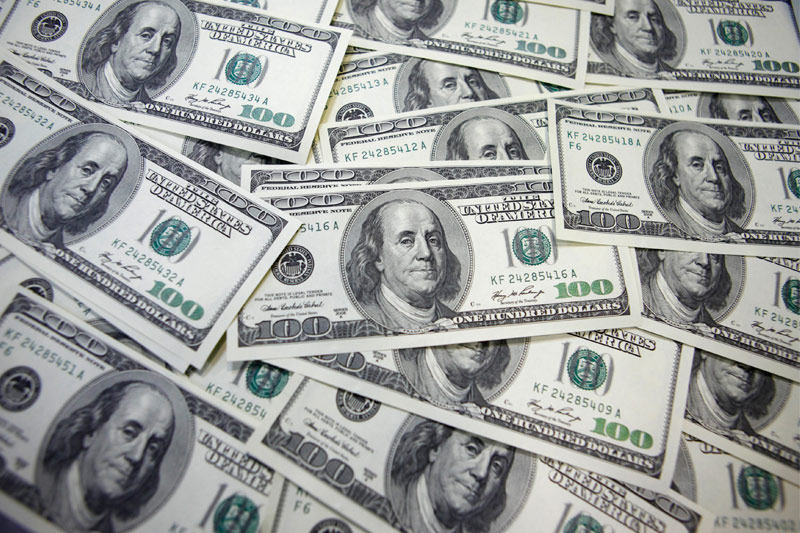
Investing.com – The U.S. dollar edged lower in early European trade Monday, falling to a six-week low and extending last week’s declines on the back of a less hawkish stance from the Federal Reserve.
At 03:20 ET (08:20 GMT), the Dollar Index, which tracks the greenback against a basket of six other currencies, edged 0.1% lower to 104.782, after dropping more than 1% last week, its heaviest fall since mid-July.
Dollar weak ahead of Fed speakers
has been on the wane since last week’s Federal Reserve policy-setting meeting, when the central bank offered somewhat dovish signals on more interest rate hikes.
This tone was backed up by Friday’s official jobs report, which showed that U.S. grew less than expected in October. The reading signaled more cooling in the U.S. labor market, which has been a key driver of the Fed’s hawkish stance this year.
Fed fund futures imply around an 85% chance the has now completed its hiking cycle, and an 80% chance it will start cutting in June.
There are at least nine Fed speakers scheduled to speak this week, including two appearances by Chair – the second of which on Thursday includes a Q&A session.
Euro climbs despite economic weakness
rose 0.1% to 1.0743, with the euro climbing to levels last seen in September on the back of the dollar weakness, rather than any form of regional economic strength.
rose 0.2% on the month in September, a stronger result than the fall of 1.0% expected, but still a sharp drop from the revised 1.9% gain seen in August.
Additionally, Germany’s residential construction sector was again hit by a wave of cancellations in October, according to a survey from the Ifo economic institute, published on Monday.
“It’s getting worse all the time, with more and more projects failing due to higher interest rates and elevated construction prices,” says Klaus Wohlrabe, Ifo head of surveys.
Sterling edged higher ahead of GDP data
rose 0.1% to 1.2384, continuing last week’s strong rally ahead of the release of Britain’s data for the fourth quarter later this week.
The held rates steady last week, and while the central bank stressed that it did not expect to start cutting them any time soon the first BOE rate cut is almost fully priced for August.
rose 0.1% to 0.6514, trading close to a two-month high as markets priced in a 25 basis point hike by the on Tuesday.
The move is widely expected by markets following a recent uptick in Australian consumer inflation. Other data also showed that retail sales unexpectedly grew in the third quarter, underpinning expectations of sticky inflation.
Elsewhere, rose 0.1% to 149.58, in holiday-thinned trade, while fell 0.3% to 7.2789, with the focus is now squarely on and data due this week, which is expected to shed more light on a sluggish economic recovery in the country.







